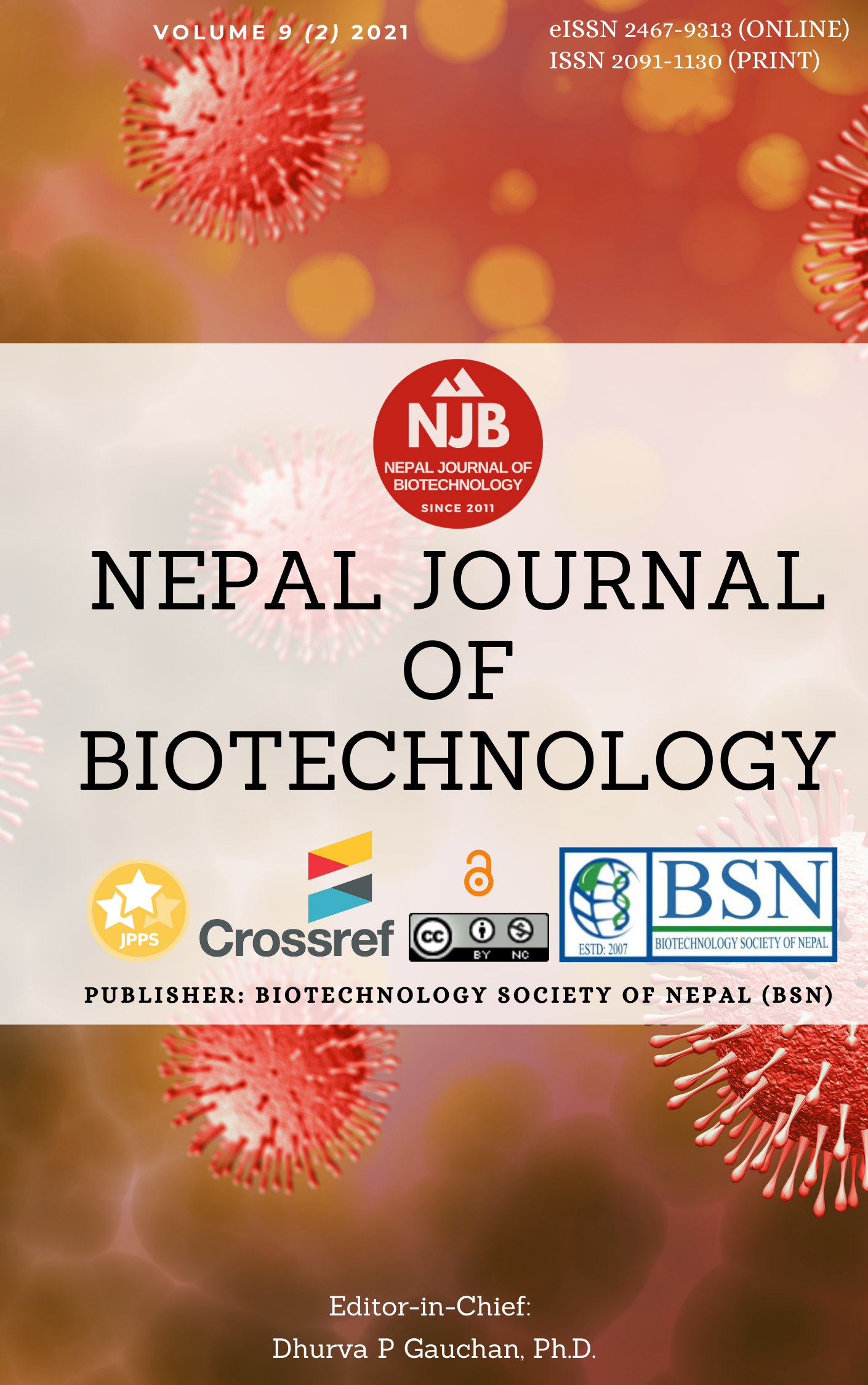Isolation, Identification and Screening of Bacillus species with Antimicrobial Activity from Different Soil Samples of Kathmandu Valley
Keywords:
Antimicrobials, Kathmandu, Bacillus spp., Staphylococcus aureus, MRSAAbstract
Bacillus species are one of the predominant soil bacteria that are able to produce essential secondary metabolites that have antagonistic effects on other microorganisms. They are Gram-positive, endospore-forming, chemoheterotrophic, aerobic or facultative anaerobic rods usually consisting of peritrichous flagella for motility. The major aim of this study was to isolate the antimicrobials producing Bacillus spp. from soil samples of different parts of the Kathmandu Valley, identify them and to assess their antimicrobial activity against different pathogenic bacteria. The test organisms used were Staphylococcus aureus (ATCC 25923), E. coli (ATCC 25922), Pseudomonas spp., Salmonella spp., methicillin-resistant Staphylococcus aureus (MRSA) and extended spectrum beta-lactamase (ESBL) producing E. coli. Twenty four isolates from 9 soil samples identified as Bacillus spp. showed the zone of inhibition around their growth on Nutrient agar during isolation. These 24 isolates were chosen for primary screening of production of antimicrobial by perpendicular streaking method using four test organisms. . Of these 24 isolates, six isolates showing a significant zone of inhibition (≥1mm) against two or more test organisms from the primary screening were chosen for secondary screening which was further tested with six test organisms including ESBL E.coli and MRSA. They were further characterized through different physiological and biochemical tests. All 6 isolates showed inhibitory action against MRSA and the largest zone of inhibition (30mm) was shown by isolate U6. Isolate U3 was found to have broad spectrum antimicrobial activity with inhibitory effect against gram negative organisms- Pseudomonas and Salmonella and gram positive organism S. aureus (ATCC 25923). Isolate U5 showed a zone of inhibition of about 25mm against S. aureus which was comparable to that of erythromycin. Hence, this study determines the soil in Kathmandu Valley as a potential source of antimicrobial producing Bacillus spp. and recommends isolation and further characterization of Bacillus isolates as a possible source of novel drug to combat with the emergence of multidrug resistant strains.
Downloads
Downloads
Published
How to Cite
Issue
Section
License
Copyright (c) 2021 Biotechnology Society of Nepal

This work is licensed under a Creative Commons Attribution-NonCommercial 4.0 International License.
Copyright Notice:
The manuscript submitted to NJB must be an original contribution, not previously published and should not be under consideration for publication elsewhere. When the manuscript is accepted for publication, the authors agree to automatically transfer the copyright of the article to the publisher. It should grant permission to any third party, in advance and in perpetuity, the right to use, reproduce or disseminate your article, according to the NJB copyright and license agreement.
Authors transfer copyright to the publisher as part of a journal publishing agreement but have the rights to: Share their article for Personal Use, Internal Institutional Use and Scholarly Sharing purposes, with the NJB applies the Creative Commons Attribution-NonCommercial CC BY-NC license to all the works we publish after Jun 2020 (Before it was CC BY-NC-ND). Under this license, authors agree to make articles legally available for reuse, without permission or fees, for virtually any non-commercial purpose. Anyone may remix, adapt, and build upon your work non-commercially, and although their new works must also acknowledge you and be non-commercial, they don’t have to license their derivative works on the same terms. More details on CC BY-NC refer to its Licence Deed and Legal Code.






